秋のケベック州(カナダ)④:9日間の滞在で気づいたこと Quebec in Autumn (Canada)④: What I noticed in 9 days stay
ケベックシティでの滞在を経てモントリオールに向かう前に、初めてのケベック州で気づいたことを簡単にまとめてみます。当地を車で旅する予定の方の参考になれば幸いです。
Before heading to Montreal after my stay in Quebec City, I’d like to briefly summarize my first impressions of Quebec. I hope this will be helpful for those planning to travel by car in the region.
(English text continues to the latter half of the page)
1.英語はどのくらい通じるのか
これこそが出発前の最大の心配事でした。カナダとは言えフランス語が公用語のケベック州、かつてドイツに住んでいた時にフランスに旅してまったく言葉が通じず辛い思いをした経験が蘇る。もちろんここはヨーロッパではなく北米の一部なのだから、まったく英語が通じないということはないだろうと想定はしていたものの、かなり身構えていたことは事実です。
結論から言うと、この心配はまったくの杞憂に終わりました。ケベックの住民は完璧なバイリンガルで、滞在中はどこに行っても普通に英語が通じました。それもアメリカ本土よりもよっぽどアクセントのないきれいな英語を話してくれました。滞在中に英語が通じなかったのはただ1回だけ、モントリオールのパン屋さんの店員で英語のできない人を見かけたくらい、その時もそばに並んでいた現地の人がすぐに英語で助け舟を出してくれて、まったく問題なく買い物を済ませることができました。またフランス語ができないことで差別されたりとかもまったく感じることなく、むしろ東京から来たというだけで「That‘s cool!」と言ってくれました。現地の方々と話ができる点においては、ケベック州の方がむしろアメリカよりも旅がしやすいところなんじゃないかと感じました。
2.交通標識と駐車ルールには慣れが必要
注意を要したのは交通標識。こちらは原則としてフランス語が主体で、余白がなければ英語の表記はありません。これらの標識についてはあらかじめスマホの映像翻訳でフランス語表記を訳して覚えておきました。特に「止まれ」の標識と駐車時間帯の表記。下の写真は時間帯による駐車禁止の表記。
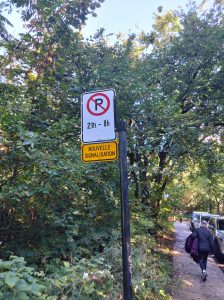
また駐車のための支払いにはかなり苦労しました。下の写真はモントリオール街中の駐車料金の支払い機、右の写真の駐車スポットのナンバーと車のナンバープレートの番号を入れるのですが、ご覧のように表記はほとんどフランス語、最初は通りがかりの人にやり方を教えてもらいました(こんな場合でも普通に英語が通じるのは嬉しいこと)。これがまたけっこう面倒くさい!しかもこの機械ではたまたまコインでも支払える機能がついていますが、少し小さな機械になるとキャッシュは使えない、どうするかと言うと、クレジットカードのタッチ決済のみのところが多かった。このタッチ決済はカナダの国内金融機関でかなり普及しているらしく、当たり前のように決済方法はタッチ決済のみという機械が多くありました。今後カナダを旅行される方は、事前に海外で使えるタッチ決済のカードを用意しておくことをお勧めします。
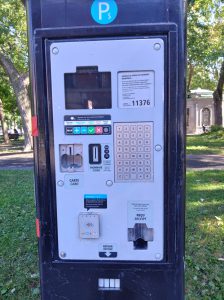
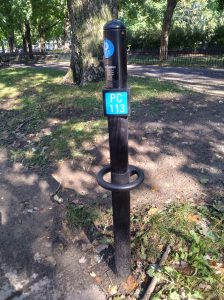
3.食べ物が美味い!
これは今回の旅で強烈に感じたことの一つ。カナダには以前バンクーバーやバンフのような英語圏を旅したことがあったのですが、その時に比べて食事は圧倒的にハズレがなかった気がします。特に街中の普通のパン屋で買うクロワッサンとバゲットがどこも美味しい!また何気なしに入ったビストロでも、普通のメニューに感動するほどのクオリティが隠れていたりする。さすがはフランス語圏の面目躍如!食のレベルはかなり高いものを感じました。
下の写真はモントリオールの旧市街で雰囲気に誘われてフラリと入ったビストロの食事(二人分)。手前のお皿はマグロのポキ(日本語のヅケ)に薄味のクラッカーを添えたもの。この醤油とスパイス風味のヅケに散りばめてあるのが少し酸味の強いリンゴのザク切り。これがとんでもなく調和していて初めて食べた味。この発想は日本人にはないんじゃないかな。もちろん食後にはウエイトレスのお姉さんに、「ビッグフィッシュイーターである日本人として断言するけど、このメニューはマグロ料理として一級品だよ」と言い残し、シェフを含めてとても喜んでもらえた。後でガイドブックを見たらけっこうな有名店だったので、これからモントリオールを訪れる方はぜひお試しを!
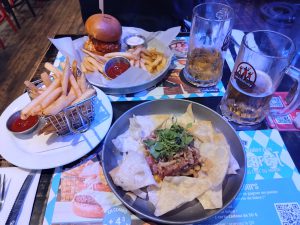
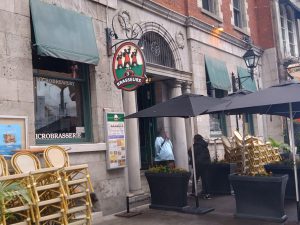
4.アメリカよりはるかに差別感覚が少ない
たかだか9日間の滞在で断定的なことは言えないものの、当地では人種、社会階級などへの差別感覚がかなり少ないように感じました。ケベック社会はとにかく移民の方々が多く、彼らなくしては社会が存続できないと思える。同じような状況の西海岸、たとえばロサンジェルスなどではアジア系の民族への根強い差別感覚が残っているが、当地においては自分だけ行列で待たされたりとか、露骨な差別意識を感じることはなかった。モントリオールで利用したAirbnbはベトナム人が多く住む地域だったが荒んだ雰囲気はなく、ロサンゼルスのようにストリートに麻薬中毒者がたむろしているような場面にも出くわさなかった。
また観光客が集まる大聖堂の近くの駅にはホームレスが集まりやすいが、彼らの周りに危険な雰囲気は少なく、通りがかりの人が気軽に笑顔でサンドイッチを彼らに手渡すような場面も何度か見た。たまたまだったのかもしれないけど、貧富の差はあるものの、下の者をさらに蹴落とすような陰険な社会の雰囲気(アメリカの大都会ではたまに見かける)とは程遠かった気がする。
5.ウォシュレットに甘やかされたお尻をお持ちの方へ
最後に胡乱(うろん)な話で恐縮です。日本人の中には、「海外に出てウォシュレットが無くなるのが一番困る・・・」という方が結構多いのではないか、と感じます。実は自分もこんなものを持参しました。
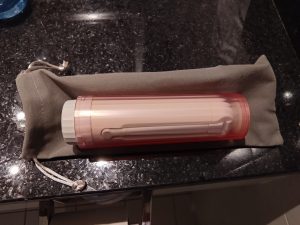
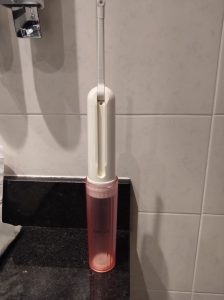
パナソニック製の携帯ウォシュレット、アマゾンで3,000円程度で買えます。これがあると無いでは大違い。大いに助けられました。
1.How Widely is English Spoken?
This was my biggest concern before departure. Although Quebec is part of Canada, French is its official language. My past experience of struggling with the language barrier while traveling in France during my time living in Germany came back to me. Of course, Quebec is in North America, not Europe, so I didn’t expect English to be completely useless—but I was still quite apprehensive.
In the end, my worries turned out to be completely unfounded. The people of Quebec are perfectly bilingual, and I had no trouble communicating in English anywhere I went during my stay. In fact, they spoke clear, accent-free English—much more so than in many parts of the U.S. The only time I encountered someone who didn’t speak English was at a bakery in Montreal. Even then, a local standing nearby immediately stepped in to help in English, and I was able to complete my purchase without any issues.
I also never felt discriminated against for not speaking French. On the contrary, when I mentioned I was from Tokyo, people responded with an enthusiastic “That’s cool!” In terms of being able to communicate with locals, I actually felt that traveling in Quebec was easier than in some parts of the U.S.
2.Getting Used to Traffic Signs and Parking Rules
One of the biggest challenges was understanding traffic signs. In Quebec, signs are primarily in French, and unless there’s extra space, English translations are not provided. To prepare for this, I used my smartphone’s image translation feature to learn the meanings of key French-language signs in advance—especially the “STOP” sign and parking time restrictions. The photo below shows how parking restrictions are indicated based on time.

Parking payments were another hurdle. The photo below shows a parking payment machine in downtown Montreal. To use it, you need to enter both the parking spot number (from the right-side photo) and your vehicle’s license plate number. However, as you can see, the instructions are almost entirely in French. The first time, I had to ask a passerby for help (and thankfully, even in this situation, English was widely understood).
The process itself was quite cumbersome! While this particular machine happened to accept coins, many smaller machines did not take cash at all. Instead, contactless credit card payments were the only accepted method. This payment system is widely adopted by Canadian financial institutions, and many machines exclusively support tap-to-pay transactions.
For anyone planning to travel in Canada, I highly recommend getting a contactless credit card that works internationally before your trip!


3.The food is amazing!
This was one of the most striking impressions from my trip. I had previously traveled to English-speaking parts of Canada, like Vancouver and Banff, but compared to those experiences, I felt that there were almost no bad meals in Quebec. Especially in the city, even the simplest croissants and baguettes from ordinary bakeries were consistently delicious! And at casual bistros, I often found surprisingly high-quality dishes hidden in their regular menus. As expected from a French-speaking region, the food scene truly lived up to its reputation—I was thoroughly impressed by the overall culinary standard.
The photo below shows a meal for two at a bistro in Old Montreal, where I was drawn in by the atmosphere and decided to give it a try. The dish in the foreground is tuna poke (similar to Japanese zuke), served with lightly seasoned crackers. What made it special was the combination of soy sauce- and spice-marinated tuna with roughly chopped, slightly tart apples sprinkled on top. The balance was incredible—I had never tasted anything like it before! This kind of flavor pairing is something I don’t think a Japanese chef would come up with.
Of course, at the end of the meal, I made sure to tell the waitress, “As a Japanese person—a big fish eater—I can confidently say that this is a top-tier tuna dish.” She and the chef were delighted to hear the compliment. Later, I looked up the restaurant in a guidebook and discovered that it was actually quite famous! If you’re visiting Montreal, I highly recommend giving it a try.


4.Far less discrimination than in the US
I can’t make definitive statements based on just a nine-day stay, but I strongly felt that Quebec has far less of a sense of discrimination based on race or social class compared to the U.S. The society here relies heavily on immigrants—so much so that it seems impossible for it to function without them.
On the U.S. West Coast, in cities like Los Angeles, there is still a deep-rooted bias against Asian communities. However, in Quebec, I never experienced being singled out, made to wait longer in line, or treated with any overt prejudice. The Airbnb I stayed at in Montreal was in a neighborhood with a large Vietnamese community, yet it never felt rundown. Unlike in L.A., where it’s common to see drug addicts lingering on the streets, I never encountered such situations here.
Near the grand cathedral, where homeless people tend to gather, I noticed that the atmosphere was not threatening at all. Several times, I saw passersby casually hand sandwiches to them with a warm smile. Maybe I was just lucky, but despite the economic disparities, I never sensed the kind of harsh, cutthroat social dynamics that sometimes exist in major U.S. cities, where the less fortunate are pushed even further down.
5.For Those Who Have Been Spoiled by Washlets
Lastly, I apologize for bringing up such an unglamorous topic. However, I suspect that many Japanese travelers would agree: “The hardest part about going abroad is the lack of washlets.”
To be honest, I’m one of those people—so I actually brought this with me…


A Panasonic portable washlet, which you can buy on Amazon for around 3,000 yen. Having this made a huge difference—I was incredibly grateful for it!
